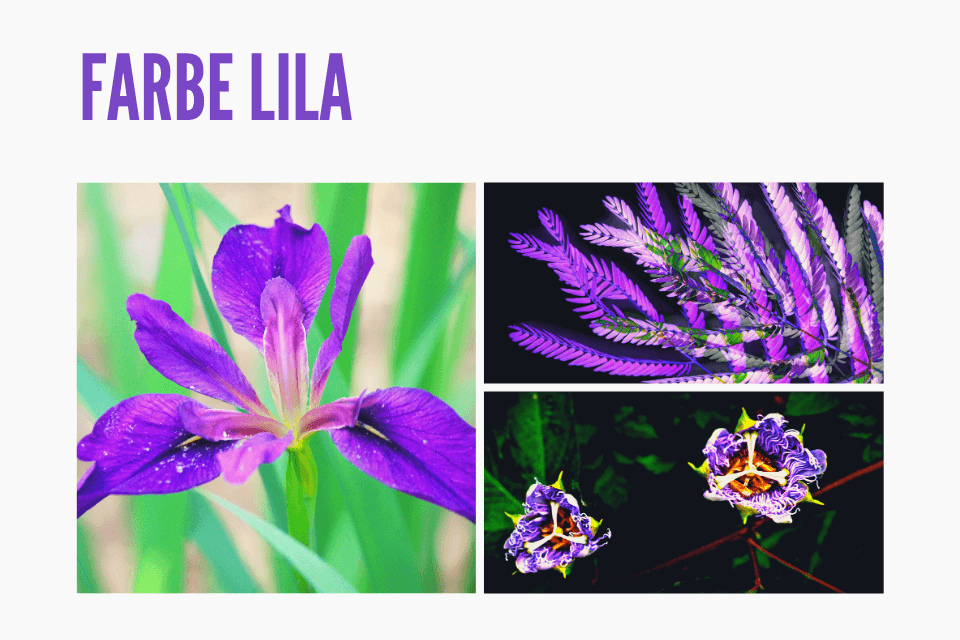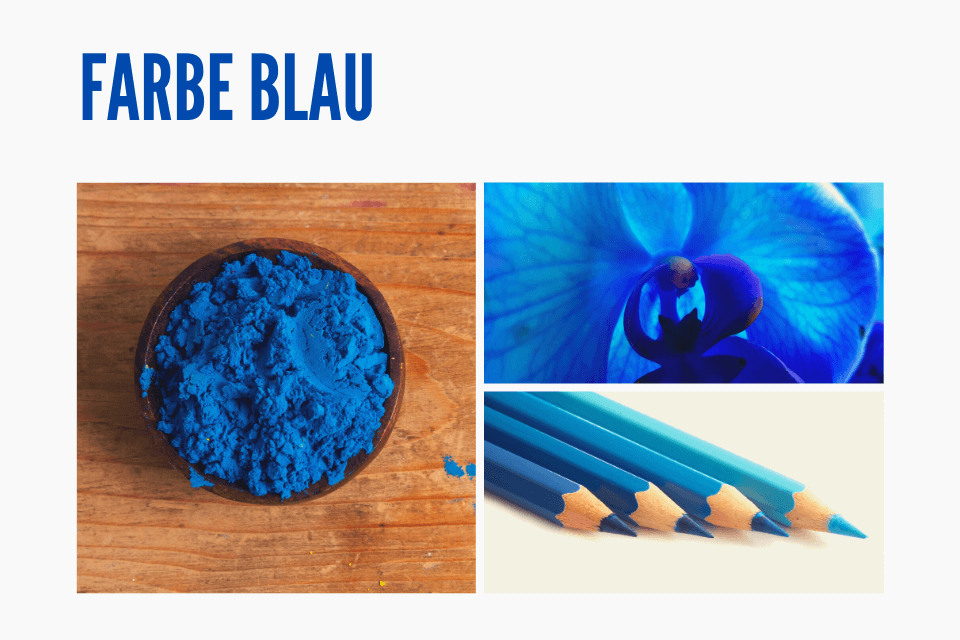Last updated on October 10, 2023 by Roger Kaufman
Colors can be perceived in different ways and have different meanings and effects on us. The secret of colors is that they are not only a visual appearance, but also have a psychological and emotional impact.
Colors, for example, can evoke moods and emotions. Red is often perceived as passionate and energetic, while blue is perceived as calming and relaxing. Yellow can convey happiness and optimism, while green is seen as renewing and balancing. These effects are not universal and can also be culturally influenced.
Colors also have practical uses, such as in advertising and marketing. Certain colors are often associated with certain brands and products to influence perception and image. For example, the McDonald's logo is yellow and red to attract appetite and attention.
In nature, colors often have an important function, for example as camouflage or as a warning signal. Certain animals and plants have colors that protect them from predators or signal to them that they are poisonous.
The secret of colors lies in their diversity and their ability to affect us and our environment in different ways.
Everything living strives towards color – Goethe
The Secret of Colors Documentary ㊙️ | Colors l1 l2 l3
The secret of color - The beauty of nature's colors can only be recognized in the light of the sun: the different colors emerge when the light divides.
When the sunlight refracts on the raindrop, the colorful miracle of the rainbow is created. No color is accidental - not the green of leaves, not the red of blood, not the black and white of space.
The film shows the great wealth of colors in our world Nature from the sunrise to the splendor of the colors of the plant flowers to the proverbial color change of the chameleons, particularly noticeable during the mating season.
Monty Christal
The secret of the colored universe ♾️ | Colors l1 l2 l3
The colorful ones Star images from NASA are known worldwide, but where do the bright colors come from? FOCUS Online interviewed an expert and sheds light on the mystery of colors in the starry sky.
Focus Online
The secret of color in the universe 🌌 | Colors l1 l2 l3
The secret of the color red 🍎 | Colors l1 l2 l3

Starting with the shade red is appropriate as it seems to be one of the most commonly loved colors in the background.
It is most likely one of the most diligently researched shades of the range, and although the data is unstable, it is considered the color with the most quantifiable impact on our lives.
A traditional example of how red may influence our habits is sporting activities.
If you look particularly at football groups in the UK since the Second World War, teams that have used red during matches have statistically performed better than they should.
Similar research studies have been conducted in the Olympics and martial arts with comparable results.
One of the earliest red pigments is called hematite and comes from the mineral Iron oxide – actually, rust.
It is very common in the earth's crust as well as throughout the world.
It is so common that one anthropologist claimed that both regular pins of human progress were tool making and the use of hematite red.
But hematite ultimately fell victim to fashion when the People pursued brighter variations of the color red.
cochineal is another red pigment that comes from a scale insect with the exact same name.
It is commonly found in South and Central America, so it was widely used in both Aztec and Inca societies.
It took approximately 70.000 of these insects to produce an additional pound of raw cochineal dye.
This pigment will today still used in food and also in cosmetics under the E120 label, which means there's a good chance your strawberry yogurt was made from insects!
The secret of the color purple 💜 | Colors l1 l2 l3

People have long associated the shade of purple with the aristocracy. This is especially true when you look at the beginning of a color called Tyrian Purple.
aristocracy https://t.co/MyXcd32nSY— Roger Kaufmann (@chairos) January 14, 2021
It is originally from two areas of mussels found in the Mediterranean region, produced by a pale gland in their body.
When this gland is squeezed or squeezed, it produces a single drop of clear, garlic-smelling liquid that, when exposed to the sunlight is exposed, changes from green to blue and then to a dark reddish purple.
It took 250.000 shellfish to produce one ounce of paint, and these shellfish were also tracked to the end.
This dye was popular throughout the Old World, and because it was so expensive and difficult to find, it was immediately associated with power and nobility.
There were also rules that determined who could or could not wear the shadow.
There is a well-known story where Emperor Nero attended a concert and identified a woman with Tyrian Purple. She was of the wrong class, so he bought her out of the room, whipped her, and took her land because he saw her clothing as an act of usurpation of his power.
The color Purple eventually declined due to the shortage of shellfish used to produce the paint, as well as political chaos in the Mediterranean region where it was produced.
It wasn't until the mid-19th century that purple came back into fashion after an accidental discovery. A younger Scientist named William Henry Perkin had attempted to create an artificial variation of quinine (which was then used to combat malaria).
While attempting to develop synthetic quinine, the researcher accidentally created a purple-colored sludge. Instead of dismissing the amount of work, he added a little Water added and also dipped a towel in it.
He accidentally ended up with a colorfast synthetic one purple color
This began a whole transformation of creating synthetic dyes that really didn't have to kill thousands of countless beetles or shellfish.
The secret of the color green 📗 | Colors l1 l2 l3

Although green is found almost everywhere in nature, producing a green dye has traditionally been extremely difficult.
In 1775, a Swedish researcher named Wilhelm Scheele developed an artificial pigment that he called Scheele's green.
There was a large market for the pigment, and because it was relatively cheap, it was regularly used in textiles, wallpaper, artificial flowers, etc
This green eco-friendly pigment was derived from a compound copper arsenite that is incredibly toxic - a piece of Scheele's green wallpaper just a few inches long had enough arsenic to eliminate two adults.
It has been reported that Scheele's most famous target may have been Napoleon. The French leader had high levels of arsenic in his system when he died.
Nevertheless, hair samples after his death showed that he had all his live long elevated arsenic levels in his blood.
While his green wallpaper probably didn't actually eliminate him, it couldn't have been really good for his overall well-being.
The power of the rainbow 🍭 | Colors l1 l2 l3
How are the colors in a rainbow created? Why is it even an arch and why can you never see it at lunchtime in the summer? We explain it in the video and also show what the treasure of gold at the foot of the rainbow is all about.
Weather Online
How is a rainbow created? 🌈 | Colors l1 l2 l3
The secret of the color blue 🔵 | Colors l1 l2 l3

Blue is just one of the most well-known colors worldwide, but until the 14th century it was nowhere near as valuable.
It wasn't until the rise of Christianity and the cult of the Virgin Mary that blue became a trend in the West.
Around this moment, the Virgin Mary became a more important Christian symbol, and she was usually depicted wearing blue bathrobes.
The shade of blue eventually became associated with Mary and gained prominence.
Mary's bathrobes were usually dyed with a blue pigment called ultramarine.
Ultramarine is made from a semi-precious stone called lapis lazuli, which is found primarily in mines in northeastern Afghanistan.
Ultramarine is an attractive deep dark blue that almost looks like the night sky.
In modern society we often tend to think of blue as being related to Children and also to view pink as associated with women.
However, if you go back a century and fifty percent, it was pretty much the opposite.
Blue was considered a feminine shade due to its association with the Virgin Mary, while pink was considered a lighter shade of red and a particularly masculine shade.
The secret of the color black 🖤 | Colors l1 l2 l3

Black is a complex hue that comes in multiple shades, although we don't think about it that way all the time think.
We have many different words for white, but we don't have the proper vocabulary to discuss the intricacies of black.
However, there is one type of black that stands out from the rest: Vantablack.
It's an acronym for vertically aligned carbon nanotube selections, and technically it's not actually a color at all.
Rather, it is a material that absorbs much more light than anything else in the world.
The connection consists of vertically aligned carbon fiber tubes, and when the light hits it, instead of bouncing off and also returning directly to our eyes, the light is trapped and absorbed between these tubes.
When you look at it, it is practically like looking at a hole of nothingness, as what you see is, strictly speaking, an absence of light.
Cassia St Clair says it was a scary experience. A scientist associated with the creation of Vantablack even claimed that he had received calls from people who had seen it and thought that this creation must in some way be the work of the enemy.
It shows the primitive reactions that shadows still have on us, no matter how much they have evolved over time. As Kassia St. Clair says:
“Colors are cultural creations and they change regularly, similar to structural panels. Color is not an exact point. It’s changing, it’s alive, it’s constantly being redefined and discussed, that’s part of the magic of it!”









